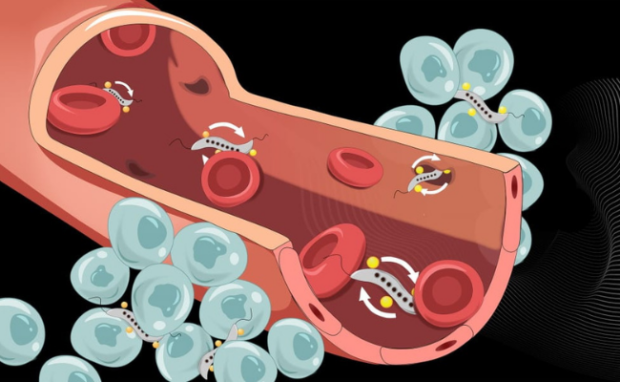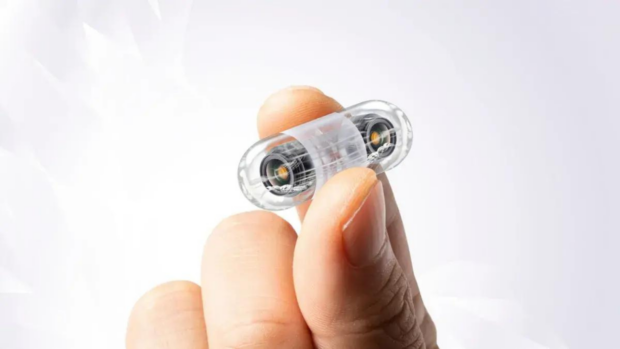College of Waterloo researchers created new microrobots with unprecedented medical purposes. These minuscule gadgets can transfer by tight, flooded environments just like the human physique to ship cells or tissues. Because of this, these tiny robots might facilitate medical procedures like biopsies and cell and tissue transport.
Know-how offers rise to many superb healthcare improvements, however they often have unintended dangers. That’s the reason consultants are extra cautious in creating such gadgets. The microrobots are a type of initiatives that would enhance healthcare whereas minimizing dangers. It’s additionally attention-grabbing to see how we will make tiny bots that facilitate medical procedures.
This text will focus on how the College of Waterloo’s consultants created medical microrobots. Later, I’ll focus on different superb healthcare improvements.
How do the microrobots work?

Hamed Shahsavan is the Division of Chemical Engineering professor who led this analysis. He mentioned his microrobots encompass a hydrogel that modifications form when uncovered to particular chemical compounds.
Shifting its cellulose nanoparticles permits researchers to program such type modifications. The College of Waterloo says it’s essential for creating practical comfortable robots.
“In my analysis group, we’re bridging the previous and new,” said Shahsavan. “We introduce rising microrobots by leveraging conventional comfortable matter like hydrogels, liquid crystals, and colloids.”
Its superior good materials is self-healing, which permits for extra programming choices. Consultants can lower the fabric and put it again collectively with out utilizing glue or adhesives.
You might also like: AI stabilizes satellite tv for pc web connectivity
That makes the microrobots versatile sufficient to type quite a few shapes. Additionally, the tiny comfortable robots reply to magnetism, letting researchers transfer them by the human physique.
The analysis workforce shared a proof of idea by shifting these bots by a maze utilizing a magnetic area. “Chemical engineers play a important position in pushing the frontiers of medical microrobotics analysis,” the professor mentioned.
“Apparently, tackling the various grand challenges in microrobotics requires the skillset and data chemical engineers possess, together with warmth and mass switch, fluid mechanics, response engineering, polymers, comfortable matter science, and biochemical techniques. So, we’re uniquely positioned to introduce modern avenues on this rising area.”
What are another fashionable healthcare initiatives?
With greater than 450 da Vinci techniques put in at U.S. tutorial medical facilities, Intuitive helps to organize the surgeons of tomorrow. https://t.co/YOsEmAM224 pic.twitter.com/qzB3doxRRx
— Intuitive (@IntuitiveSurg) April 27, 2022
You’d be shocked how far fashionable healthcare is progressing. For instance, China just lately grew the first-ever humanized kidneys in pigs. Because of this, it may assist extra individuals who want transplants get assist.
Guangzhou Institutes of Biomedicine and Well being consultants mixed embryos with pig and human cells. Transferring them to surrogate pig moms produces humanized kidneys.
These organs had a traditional construction and tubule formation after 28 days. Because of this, their analysis marks the primary time folks grew humanized physique components inside one other species.
The information outlet mentioned integrating stem cells into pig embryos was tough as a result of pig cells “outcompete human cells and pig and human cells have completely different physiological wants.” But, senior writer Guangjin Pan discovered an answer. Right here’s the way it labored:
You might also like: Vietnam efficiently clones pigs
- The scientists create a distinct segment inside a pig embryo in order that human cells wouldn’t must compete with pig cells. In different phrases, they used CRISPR so the pig embryo would lack two kidney growth genes.
- Subsequent, researchers engineered human pluripotent stem cells, which may turn into any cell sort. Consequently, they’re extra prone to combine with a pig and fewer prone to self-destruct.
- Then, the Guangzhou Institute researchers cultured these cells in a particular medium. Because of this, they flip them into “naive” cells resembling early human embryonic cells.
- The scientists grew these hybrids or chimeras in distinctive vitamins as a result of human and pig cells have completely different wants.
- Afterward, they implanted the creating embryos in surrogate sows.
Medical training can be shifting because of the increasing use of surgical procedure robots. The College of California added the management of the Da Vinci Surgical System and comparable gadgets in its curriculum.
Conclusion
College of Waterloo consultants created microrobots with promising medical purposes. They might manipulate its form to suit into the human physique safely.
It additionally modifications form in response to magnetic fields, enabling researchers to maneuver it by a affected person remotely. Then, they might ship particular cells and tissues to focus on components.
Study extra about this medical microrobot venture by studying its analysis paper on the Nature Communications web site. Verify extra digital suggestions and traits at Inquirer Tech.

